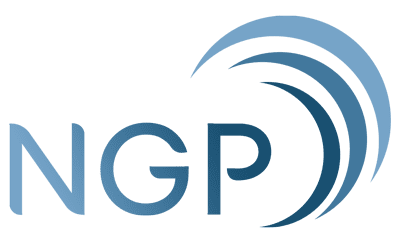So you’ve learned how to craft compelling content. How do you know if it’s working?
This article is for the business with a social media presence and content creation strategy, and is looking to refine it. Whether you’re just starting out with posting content, or if you already have quite the following and you want to understand what KPIs you should be measuring vis a vis the content you’re putting out, read on.
Engagement metrics and content
Engagement metrics show you the data to understand how your content is performing. It helps you measure your KPIs and tells you whether your campaigns truly made an impact on your audience. This data can also help you fine-tune your content strategy for the better.
Types of engagement metrics
- Time on page – This sums up the duration visitors stay immersed on a specific webpage, basically confirming how effective your content is at doing its job; if not, then it might be high time to spruce things up a bit!
- Bounce rate -This tracks the percentage of people who leave your website after only viewing a single page, hinting at two likely factors: (1) your landing page lacked a “hook” that invites further inspection, or (2) it did not present the needed info they were seeking, sometimes a result of clickbait failing to deliver its “promise”. To remedy this, shed clickbait practices and focus on fully optimizing the fundamentals – site speed, sleek layouts, and user-friendly navigation. And above all, incorporate user feedback. These will make a world of difference!
- Pages per session – This shows the average number of pages a user explores throughout a browsing session; when they click through several pages (or engage with suggested content), it is a clear sign that they are genuinely interested and invested in what you are putting out! So keep it up!
- Social shares – This encapsulates the content’s overall appeal and capacity to earn glowing endorsements within your audiences’ networks. In simpler terms, more shares = more organic reach! But you also have to consider what you aim to be shared for. These days, some brands resort to sensationalism that stokes outrage on their behalf to generate traction (like those reels that have brands sharing screenshots of customer canceled orders and outrageous firsthand anecdotes); people sure do relish in juicy stories, but it is far wiser to be known for your credibility and dignified content.
- Comments and interactions – This signals the frequency in which your content is consumed, and more importantly, engaged with. From there, you can harvest valuable feedback and ideas for future products or content (e.g., followers may suggest an influencer they want to see next or if you should create additional content in the same style/topic).
Pro tip: Determine which engagement metrics represent your campaign goals best so that you can stay focused!
Tools for measuring engagement metrics
- Google Analytics – This is an absolute must-have. Why, you might wonder? Well, it repackages website engagement data (featuring elements of user behavior and content performance) into a digestible overview that points you toward areas hitting the mark or requiring adjustments!
- Social Media Analytics – Social media platforms such as Facebook and X (formerly Twitter) come equipped with intuitive tools that simplify the tracking process of engagement metrics (shares, clicks, quote-retweets, and reactions). Handy for instantly identifying what is effective and what falls flat in real time. Though, keep in mind: timing your post also plays a part in all of this. Best to publish when your users are most active to attract more attention and truly gauge audience sentiment.
- Third-party Tools – Juggling multiple social media platforms can pose quite the challenge, that is where tools like BuzzSumo and Hootsuite come in clutch! These seamlessly keep tabs on content performance across multiple channels (yes, you read that right!) and keep you clued in on the latest trends that might have slipped under your radar. Best of all, they come with free trials, so you can test one (or both) out and see how well they slot into your workflow.
Content planning for engagement
Assign them under an appropriate date, even if they are still in the bare-bones stage – and here is why: let us say, the plan is a Valentine’s Day-themed product recommendation content. Naturally, that date and theme will inform how you can shape it, answering questions like the best celebrity personality to collaborate with, which items to include, format, etc. After that, aim to publish it weeks ahead. Guaranteeing you catch planners early, right when they start browsing for gift ideas. In short: more visibility and a higher chance of conversions!
Though, to boost your chances, here are the best SEO optimization techniques you can also employ:
- Identify the appropriate keywords that relate to your topic and theme.
- Write meta descriptions and titles that accurately reflect your content’s core messaging. Thereby, improving click-through rates from search engine result pages.
- Embed internal links within your content to nudge users into discovering more content, increasing pages visited and spent per session on the site.
Types of content that drive engagement
Deciding what format and topic to create should be rooted in what feels on-brand. Think about your services, values, goals, and the customer-brand relationship you are trying to build. But keeping things interesting also calls for not boxing yourself in to grow. Therefore, play around with formats, and see which one clicks best:
- Blog posts – Work wonders in inspiring discussions, building trust with your audiences, and increasing time spent on your website! (e.g., the story behind the brand, a guest post of an influencer, how to use your products, an interview with a brand ambassador, a roundup of the best products for every concern).
- Videos – The go-to for riding trends and making things an instant hit (e.g., unboxing videos, ASMR videos)
- Infographics – Blends eye-catching visuals with info that lands with any audience, without a hitch!
- Podcasts – Offers an intimate touch, letting you cover any topic that hits close to home (or more accurately, the brand!).
The top priority
At NGP, we’re fans of putting out as much content as possible to have the data we need to inform our strategies better. We’re also big fans of quickly adjusting everything based on metrics, so we can hit our targets fast. We do this with an audience-first mindset paired with understanding the nuances of engagement so we can make those digital campaigns succeed.
Want to skip the headaches of trial and error? Work with NGP-IMC for audience-centric content finetuned with engagement metrics that achieve maximum payoff!

Gayle is a copy editor and contributing writer for NGP-IMC, covering all the latest buzz around PR and digital marketing. Previously, she’s penned personality-packed ad copies, headlines, print journals, and articles for industry-leading brands and publishers such as foodpanda, Under Armour, Klook, and more! Additionally, she’s profiled Olympic gold medalist Hidilyn Diaz, developed scripts for South Korea’s SK-Zic and interviewed female riders to shed light on their experiences at the forefront of dismantling gendered expectations within the male-dominated delivery space.


